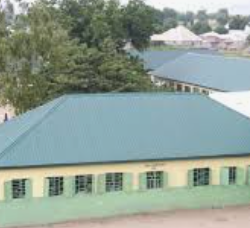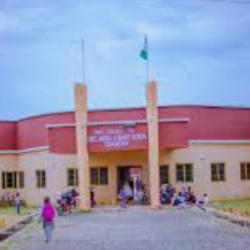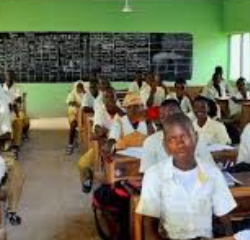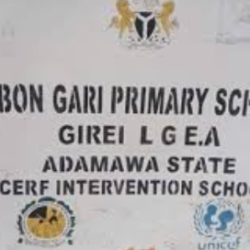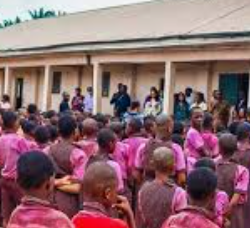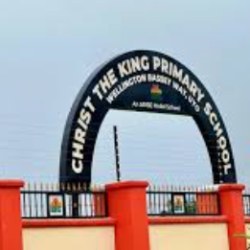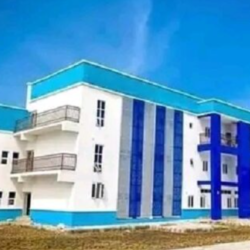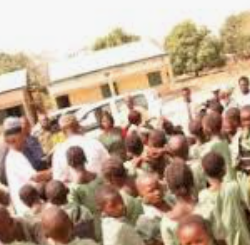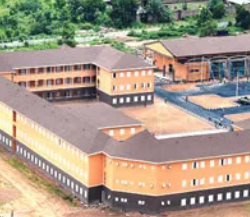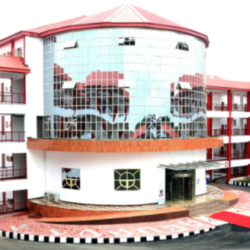Insights into Uganda’s education landscape
- Primary School Enrollment Discrepancy:
- Gross Enrolment Ratio (GER): 120% indicates significant over-enrollment. This typically means many enrolled students are either younger or older than the official primary school age (due to late entry, repetition, or overage enrollment).
- Net Enrolment Ratio (NER): 78% reveals the core issue: only 78% of children of official primary school age are actually enrolled. This highlights a substantial gap in accessing primary education for the target age group.
- Severe Challenges in Secondary Education:
- GER: 34% and NER: 23% are critically low. This means only about 1 in 3 children of secondary school age are enrolled (GER), and only about 1 in 4 children of the exact secondary school age are enrolled (NER). This points to massive barriers preventing transition from primary and access to secondary education.
- High Cost Burden for Secondary Education:
- Households spent an average of UGX 2,254,695 per learner on secondary education. This is a significant financial burden and directly relates to the low enrollment rates. Affordability is a major barrier.
- Adult Literacy & Historical Access:
- 13% of persons aged 15+ lacked formal education. This reflects historical gaps in access and contributes to challenges in the current system (e.g., parental attitudes, economic limitations).
- Major Reasons for Primary School Non-Attendance:
- Parental Perception (Too Young): The leading reason (32%) for children aged 6-12 never attending was parents considering them “too young.” This suggests awareness gaps about school starting age or cultural factors.
- Cost: The second major reason (23%) was school being “considered too expensive.” Even primary education imposes costs (fees, uniforms, materials, opportunity cost) that families struggle with.
Key Implications:
- Access vs. Age-Appropriateness: While primary schools are full (GER 120%), many enrolled children are not the right age, and a significant portion of the correct age group (22%) is still missing out (NER 78%).
- Secondary Education Crisis: The transition from primary to secondary is collapsing (GER 34%, NER 23%), largely driven by cost (UGX 2.25M/household) and likely compounded by other factors like distance, perceived value, and primary completion rates.
- Affordability is Paramount: Cost is a critical barrier at both levels, explicitly cited for primary non-attendance (23%) and evidenced by high household spending for secondary.
- Socio-Cultural Barriers: The perception that children aged 6-12 are “too young” for primary school is a significant, unexpected barrier requiring community engagement and awareness.
- Intergenerational Impact: The 13% of adults without formal education highlights a legacy of limited access, likely influencing current household circumstances and attitudes towards schooling.
Uganda faces a dual challenge: ensuring all primary-age children enroll (addressing cost and the “too young” perception) while simultaneously tackling the severe collapse in secondary enrollment, primarily driven by unaffordability. Significant investment and policy interventions focused on reducing costs and changing community perceptions are crucial.

Certainly. Here is a professionally written and detailed narrative based on the statistics you provided:
Current Trends and Challenges
Enrolment Indicators
Uganda’s education sector in the 2023/24 academic year presents a mixed landscape of progress and persistent challenges. The Gross Enrolment Ratio (GER) at the primary level was estimated at 120 percent, indicating that the total number of pupils enrolled in primary school—including those older or younger than the official age group—exceeds the number of children in the target age group (typically 6–12 years). While this figure reflects a significant level of access to primary education, it also underscores potential inefficiencies, such as overage enrolment due to late school entry or repetition of grades.
Conversely, the Net Enrolment Ratio (NER)—which measures the proportion of children of official primary school age who are enrolled in school—was only 78 percent, suggesting that more than one in five children of primary school age were not in school. This gap highlights concerns related to early dropout rates, access barriers, and socio-economic constraints.
Secondary Education: Lagging Behind
The disparities are even more pronounced at the secondary level. The GER for secondary education stood at 34 percent, while the NER was 23 percent, reflecting both low enrolment and retention rates among adolescents. This sharp drop-off from primary to secondary education is indicative of systemic challenges, including limited availability of secondary schools, long travel distances, and socio-economic obstacles.
Cost of Education and Household Burden
One of the most significant impediments to educational attainment in Uganda is the cost of schooling. Households reportedly spent an average of UGX 2,254,695 per learner on secondary education. This figure, which encompasses school fees, uniforms, learning materials, transport, and other ancillary costs, places a heavy financial burden on families—particularly in rural and low-income communities.
The impact of these costs is starkly reflected in the reasons cited for non-attendance. About 23 percent of children were reported to have not attended school because education was deemed too expensive. This aligns with national patterns of income inequality and reveals the direct connection between poverty and limited access to education.
Barriers to Primary School Entry
Despite the relatively high GER at the primary level, a troubling 32 percent of children aged 6–12 years had never attended school. The primary reason, cited by caregivers, was that children were considered too young. This perception points to a need for increased awareness about the appropriate age for school entry, as well as community sensitization on the importance of early childhood education.
Adult Education and Literacy
Uganda also faces challenges in adult education. As of 2023/24, approximately 13 percent of individuals aged 15 years and above had no formal education. This not only reflects historic inequalities in access to education but also emphasizes the need for adult literacy programs and lifelong learning initiatives to bridge generational education gaps.
Policy Implications
While Uganda has made commendable strides in expanding access to education at the primary level, significant disparities remain—especially at the secondary and adult education levels. The high GER juxtaposed with a lower NER illustrates inefficiencies in the system, including dropout rates and grade repetition. Moreover, the financial burden on households continues to be a major deterrent to sustained educational participation, particularly for secondary school learners.
To achieve universal education and fulfill the targets set under Sustainable Development Goal 4 (Quality Education), Uganda must prioritize the following:
- Reducing the cost of secondary education through expanded public funding and school subsidies;
- Increasing awareness among parents regarding the appropriate age for school entry;
- Improving access to secondary schools, especially in underserved rural areas;
- Investing in adult education programs to address the learning needs of those who missed out on formal education;
- Strengthening early childhood education to improve readiness for primary school.
A multi-sectoral approach involving education policymakers, community leaders, civil society, and development partners is crucial to building an inclusive and equitable education system that meets the needs of all learners in Uganda..
Here’s a refined, professional blog-style article enriched with visuals and authoritative sources:
Enrollment Patterns, Costs, and Ongoing Challenges
Uganda continues to make notable progress in expanding access to education, especially at the primary level. Yet, significant challenges remain—particularly in secondary education access, affordability, and educational equity.
- Primary Education Access and Efficiency
Primary GER in 2023/24 was 120%, indicating high enrolment, including overage and underage learners. This reflects issues such as grade repetition and late entry .
The Primary NER stood at 78%, meaning one in five children aged 6–12 were not enrolled in school .
These figures underscore both broad access and inefficiencies that affect educational quality.
- Secondary Education: Low Reach and Stagnation
Secondary GER remained at around 34–37%, showing minimal growth over years and lagging behind regional peers .
Secondary NER hovered at 23%, meaning nearly three-quarters of secondary school–age youth (13–18 years) were not enrolled .
Enrollment remains far lower in rural and northern regions such as Karamoja and Acholi, where rates can dip below 10–12% .
- Household Education Expenditures
Families paid an average of UGX 2,254,695 per learner on secondary school costs, including fees, uniforms, materials, and transport.
Cost remains a major barrier: 23% of children did not attend school because it was considered too expensive—and financial unpredictability further worsens the dropout risk .
- Barriers to Beginning Primary Education
32% of children aged 6–12 had never attended primary school, largely due to perceptions that they were too young—highlighting gaps in parental awareness and early childhood education outreach.
- Adult Education and Literacy Gaps
Approximately 13% of Ugandans aged 15 and above had no formal education, underlining ongoing generational disparities and the need for adult literacy programs.
- Contextual Factors and Regional Disparities
Uganda has a very young population: nearly 48% of citizens are under 15 years old, exerting pressure on education systems .
Education financing has declined as a share of government expenditure, shifting priorities away from secondary schooling to preschool and primary levels .
- Insights from COVID‑19 Disruptions
During the pandemic, Primary NER dropped from 94.8% to 85.6%, and Secondary NER declined sharply from 64.2% to 38.1% .
These disruptions disproportionately impacted low-income households and girls, compounding existing inequalities.
☑ Key Data at a Glance
Indicator Value
Primary GER ~120%
Primary NER ~78%
Secondary GER ~34–37%
Secondary NER ~23%
Household cost per secondary learner UGX 2,254,695
Children not attending (too young) 32%
Children not attending (cost) 23%
Adults (15+) without formal education ~13%
Implications and Policy Directions
- Reduce the Cost Burden
Subsidize uniforms, textbooks, and ancillary fees—especially in rural and low-income zones. Fee hikes at both public and private schools must be regulated to prevent dropouts . - Raise Awareness
Promote early childhood education and correct misconceptions about required school-entry age. - Expand Secondary Access
Establish more secondary schools in underserved districts, and prioritize teacher training and infrastructure investments . - Support Adult Learning
Implement nationwide adult literacy and skills programs to address current gaps in formal education. - Resilience in Crisis
Build emergency learning strategies to prevent long-term disruptions from health crises, natural disasters, or socioeconomic shocks.
Frequently Asked Questions
Q1: What explains the discrepancy between GER and NER at primary level?
A: GER includes overage and underage students, while NER counts only children in the official age group. High GER with lower NER signals grade repetition, late entry, or overage enrolment.
Q2: How do secondary school costs impact attendance?
A: With household spending averaging UGX 2.25 million per student per year, even in “free” public schools, many families cannot afford additional fees or supplies—leading to high dropout rates .
Q3: Which regions face the greatest secondary enrollment gaps?
A: Northern regions like Karamoja and Acholi record GER and NER as low as 7–12%, compared to urban areas like Kampala with secondary NER rates over 50% .
Q4: How did COVID‑19 affect education in Uganda?
A: Enrolment declined sharply during school closures, pushing Secondary NER down to ~38% and Primary NER to ~85.6% by mid‑pandemic—worsening inequality .
Q5: Why is adult literacy still a challenge?
A: Roughly 13% of Ugandans aged 15+ have never attended school, often due to missed opportunities during earlier decades. Adult education programs remain limited.
Q6: What policy priorities can improve education access?
A: Focus areas include subsidizing school costs, community outreach on entry age, expanding access in underserved districts, investing in teacher quality, and supporting resilience after crises.
Uganda has made commendable strides in primary school access, but systemic gaps remain—especially in secondary education and adult literacy. Financial barriers, uneven regional development, and inequitable infrastructure present major obstacles to sustainable progress.
The data underscores the urgent need for policies aimed at reducing household costs, raising community awareness, expanding school availability in underserved areas, and prioritizing education financing. Investing in these areas is essential not only for individual opportunity, but for fulfilling Uganda’s long‑term development goals and transforming its demographic advantage into inclusive growth.
